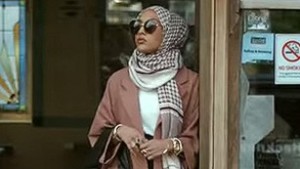While wasting time on YouTube, I recently came across a series of Pakistani commercials for the phone service Ufone. I tend to roll my eyes at the attempts of companies to get people’s money, but with Pakistani commercials it’s different. Watching Pakistani commercials remind me of the winter evenings I’ve spent in Pakistan, cuddled under the warm comforter with my aunts and cousins watching Pakistani or Indian dramas interspersed with wholesome, lively Pakistani commercials.
As I watched one commercial after another for Ufone, I noticed an interesting trend. Other than the fact that many of these commercials made me literally laugh out loud (the comic writing is quite clever), I realized that their depictions of women were noteworthy. (I am well aware that these are not recent commercials.)
It is important to note that my reactions to the commercials were based on my own intersectional experiences living in the West – a part of the world which depicts Pakistani women as helpless, oppressed, and with no choice but to cover from head to toe. As a Pakistani-Canadian, I know the diversity of women in Pakistan, but I am also aware of the very real and problematic patriarchal nature of Pakistani society.
Of course, the manifestation of patriarchy is very much tied to economic factors and so comparisons between patriarchal societies are futile, often leading to racist conclusions. However, I cannot ignore the serious problems of patriarchy in Pakistan. My awareness of the issues is based mainly on the words, works, and efforts of those many in Pakistan who question and challenge the patriarchy from within, not those of us in the West imposing our views on others. My discussion of these commercials will therefore occur within this context.
The first one to catch my attention was this amusing commercial.
With a tagline of “It’s all about you,” the commercial depicts a diversity of Pakistani women using cell phones. We see a mother and her two adult daughters in a village home, a woman sharing her phone with her husband, a doctor in scrubs, a painter, a young woman walking to school… However, the depiction that stood out the most to me was of a happy husband at home with his baby using his phone to send a picture of the baby to his wife, who is seen at her office. Yes, a depiction of a working mother and what seems to be her stay-at-home husband.
Working women in Pakistan are quite common and such images rarely lift an eyebrow. However, a father staying at home and caring for the baby? And happily and willingly at that? Now that is something you rarely see. Although this is most likely to be common among the middle to upper classes in Pakistan, the depiction of this lifestyle is still a very pleasant sight. To have this particular image, as brief as it was, flash before Pakistani television viewers (especially men) presents a positive tone to a situation very often seen as shameful. Again, this is no revolution, but it may be a small opportunity to express that this living situation is acceptable and can be quite fulfilling for those able to do so.
Ufone commercials do indeed seem to be presenting a particular image of women. Other commercials depict women as dancing execs, as young college students partying with their male and female friends, as sexy temptresses singing Bollywood numbers, as housewives, and….as phones. Yes, as partying female phones flirting with male phones. The diversity of roles of women in these commercials speaks to the diversity of Pakistani women themselves, something rarely seen in Western representations of Pakistani women.
However, these commercials are not without their problems. For example, this commercial:
Here we see a housewife who leaves the house in a mess to watch her soaps, and her husband threatens to take a second wife after seeing the state of their messy apartment. Her response to his threat is to throw him out the window, which subsequently leads to a series of accidents involving various men on the street. This depiction utilizes the tired and sad stereotype of the controlling, overbearing wife and her poor, hen-pecked husband.
In South Asia, this particular expression of a marital relationship has made more than its fair share of appearances in pop culture, furthering the sexist belief that marriage inevitably leads to subservient husbands and domineering wives. Add in the fact that the marriage in this commercial resulted from love as opposed to arrangement, this commercial problematizes “love marriages” by blaming the dynamics of this relationship on the fact that they chose each other. Because we all know that if mommy and daddy had chosen his wife, she would have been the subservient one.
A friend mentioned to me that he found the “sexy temptress” commercial (in which three women strut into an old rest stop) problematic, as it presented women from the perspective of the male gaze.
True: as the women walk in, a mechanic smiles stupidly while eyeing them. And true, the women use their beauty to tease a young man into thinking they were taking his phone away from him. However, these women were not trying to please the man, nor any men. In fact, the women and the man only seem interested in the phone.
Many of these commercials present women from middle to upper classes, very often in Western-style settings. The commercials do not reflect the realities of life for many Pakistani women. But commercials are meant to sell products, and products are sold by creating a desire for the product by associating it with a fantastical life. Bring the viewer into the fantasy and make them buy the service.
Overall, these commercials are fun, funny, entertaining, and creative. I am not claiming the depictions of women in these commercials are somehow breakthroughs for Pakistani women; I’ve watched enough Pakistani soaps myself to know that Pakistani media has never shied away from depictions of strong women. But in a world where negative images of women are the norm in advertising, positive, strong images of women are always something nice to see.











